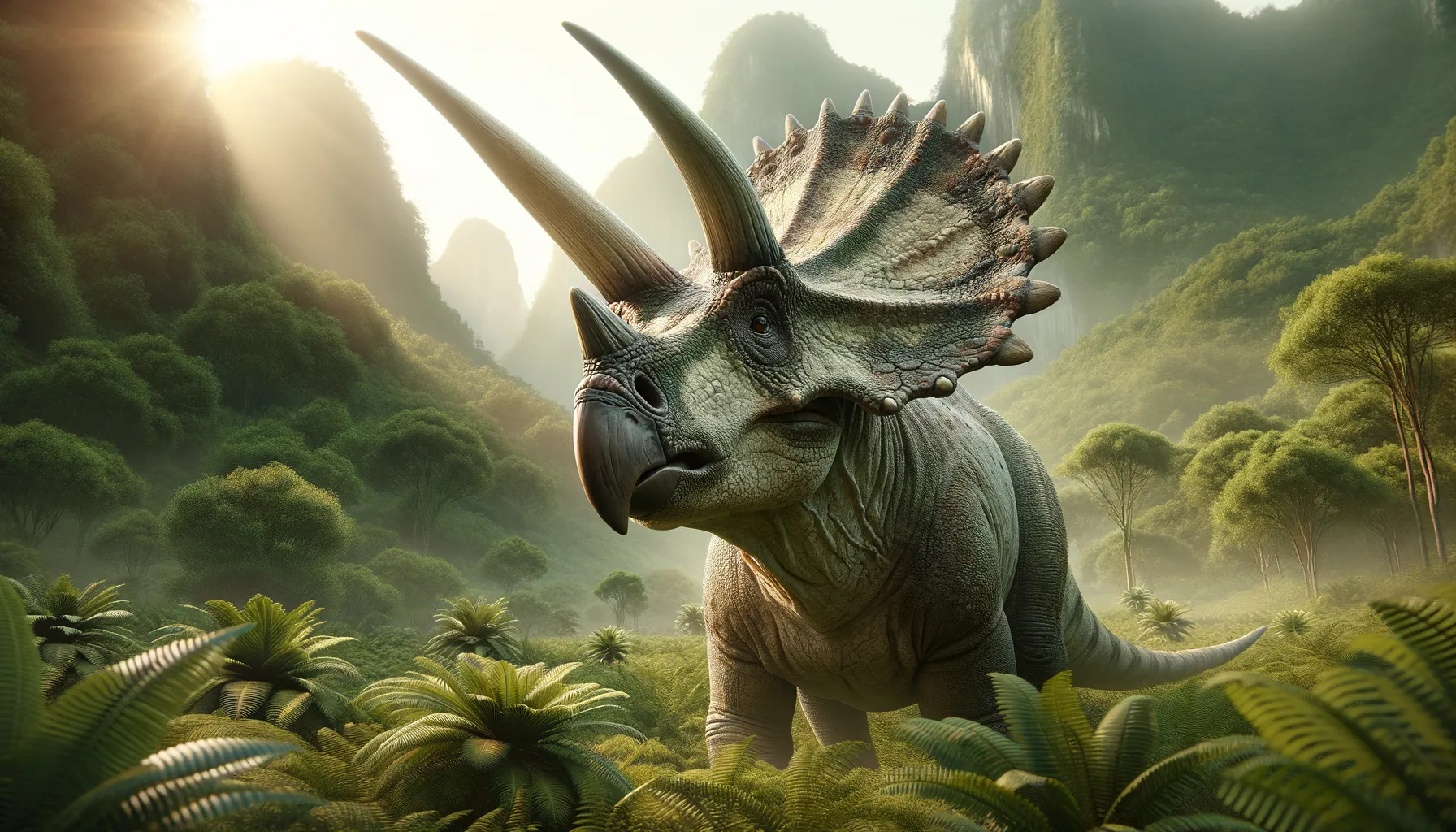
Sinoceratops
Discover the horned giant of ancient Asia.
Period
Cretaceous
Length
Approximately 19.7 feet long.
Height
About 5.9 feet tall at the shoulders.
Weight
Around 2 tons.
Sinoceratops was a large ceratopsian dinosaur known for its distinctive frill and single large horn above its nose. Living in what is now China during the late Cretaceous period, it was part of a group of herbivorous dinosaurs that grazed the rich plant life of the time. Its discovery has provided valuable insights into the diversity and distribution of ceratopsian dinosaurs in Asia.
Diet
Sinoceratops was an herbivore, primarily feeding on the abundant vegetation available during the Cretaceous period. It likely consumed a diet of ferns, cycads, and conifers, using its beak to strip leaves from plants.
Hunting
As an herbivore, Sinoceratops did not hunt for food. Instead, it spent most of its time grazing on plants. Its primary focus was on finding suitable vegetation to sustain its large size.
Environmental challenges
Sinoceratops lived in a period of significant climatic changes during the late Cretaceous. It faced challenges such as fluctuations in plant availability due to shifting climates and associated competition for food. Predators also posed a challenge, requiring Sinoceratops to use its horns and frill for defense. Additionally, occasional environmental perturbations, like volcanic activity, could have altered its habitat.
Speed
Relatively slow, due to its large size.
Lifespan
Estimated to be around 70-80 years.
First discovery
Discovered in 2008 in the Shandong Province of China.
Fun Facts
- Sinoceratops was a herbivorous dinosaur that lived during the late Cretaceous period, about 73 to 68 million years ago.
- It is the only known ceratopsid dinosaur discovered in China, its name means 'Chinese horned face'.
- Sinoceratops had a large frill on its head adorned with small horns, which made it quite distinctive.
- It was roughly 6 meters (about 20 feet) long, making it one of the larger ceratopsians.
- Unlike its more famous relative Triceratops, Sinoceratops had a single prominent horn on its nose but lacked the large brow horns.
- Its frill featured a series of finger-like projections, giving it a unique appearance compared to other horned dinosaurs.
- Sinoceratops likely roamed the lush floodplains of its time, thriving on a diet of plants and vegetation.
Growth and Development
Sinoceratops began life as a small hatchling but grew rapidly during its first few years. Its growth involved the development of its signature horn and frill, crucial for defense and social interaction. Over time, it reached its full adult size, with maturity likely reached at around 10 to 15 years of age.
Habitat
Sinoceratops inhabited lush, forested floodplains where it had access to diverse plant life. These areas were ideal for grazing and offered ample protection from predators. The presence of rivers and lakes provided necessary hydration and supported the rich plant diversity. Seasonal changes in the region could have influenced its movement and feeding patterns.
Interaction with other species
Sinoceratops likely coexisted with a variety of other dinosaur species, including both herbivores and carnivores. Its interactions with predators like tyrannosaurids would have been defensive, using its horns and robust build. Socially, it may have interacted with other ceratopsians or herbivores, possibly forming herds for protection and socialization.
Natural lifespan
Its natural lifespan is estimated to be around 70 to 80 years.
Reproduction
Sinoceratops likely reproduced by laying clutches of eggs, similar to other ceratopsians. Nesting sites would have been carefully chosen to protect the eggs from predators and provide warmth. Parental care after hatching may have involved guarding the young until they were more self-sufficient.
Social behaviour
It is hypothesized that Sinoceratops was social, potentially forming herds for protection against predators. The frill and horns may have played roles in social behavior, including mate attraction and establishing dominance hierarchies. Herding could have facilitated collective foraging and protection for younger members.
Fossil locations
Fossils of Sinoceratops have primarily been found in the Shandong Province of China. The discovery site has provided a wealth of information about late Cretaceous ecosystems in Asia. These fossils have helped paleontologists understand the species' morphology and ecological role. The region continues to be a significant area for paleontological discoveries.
